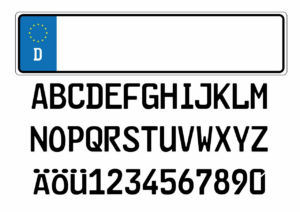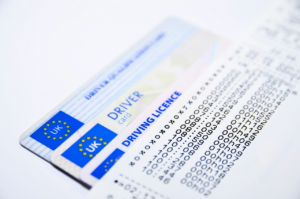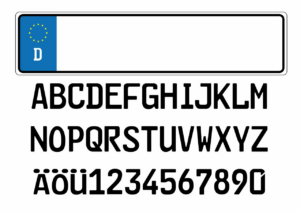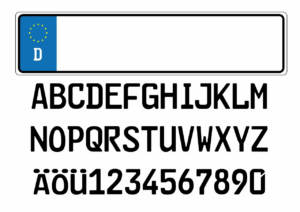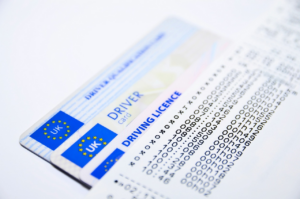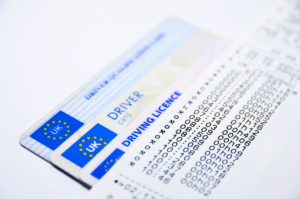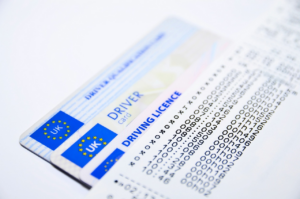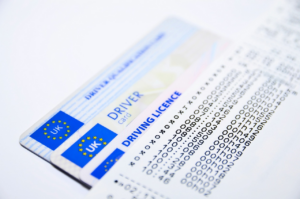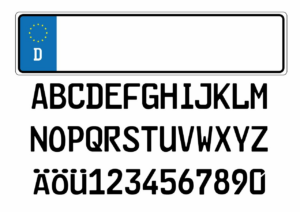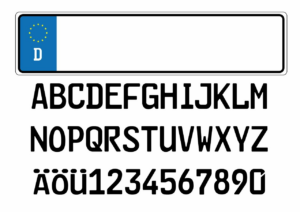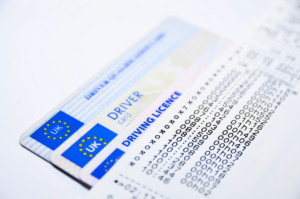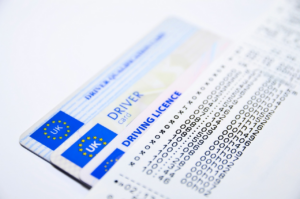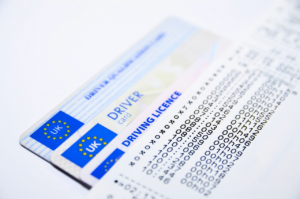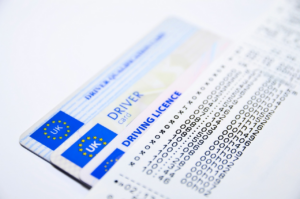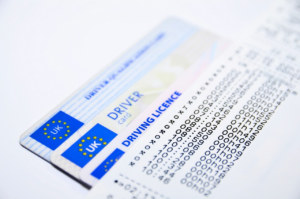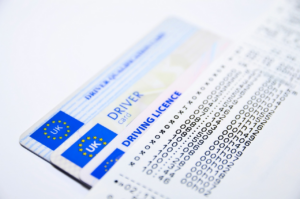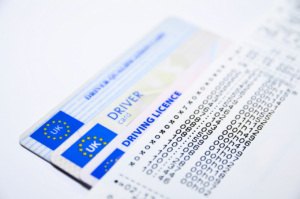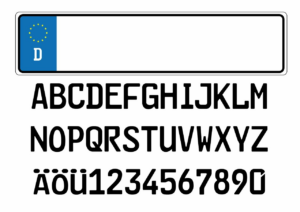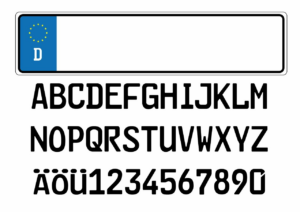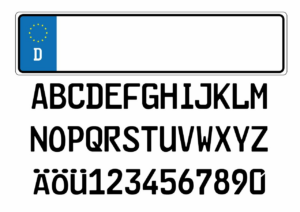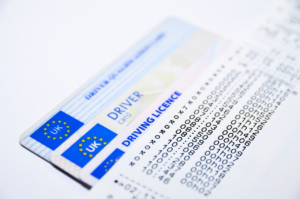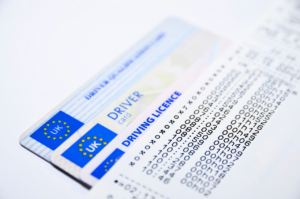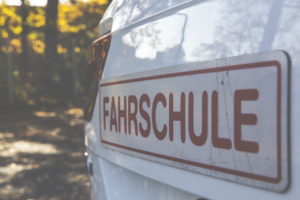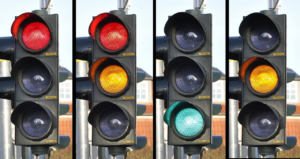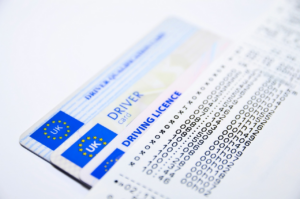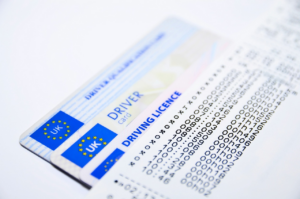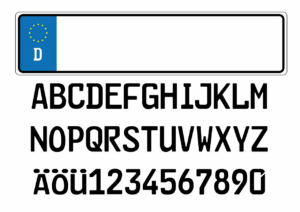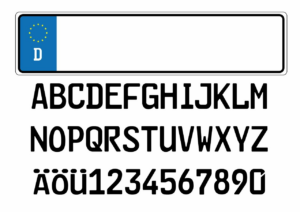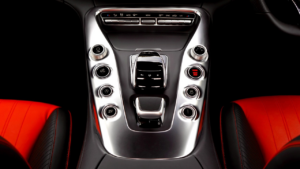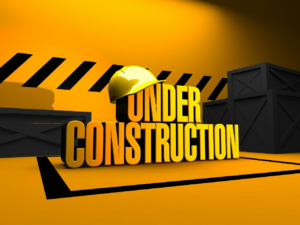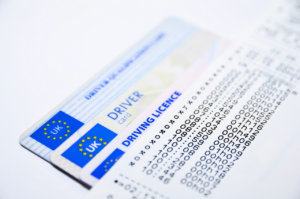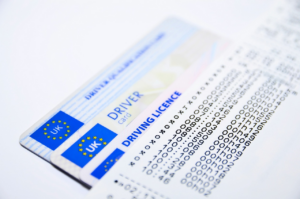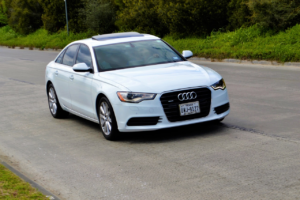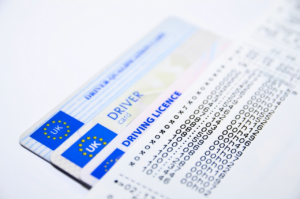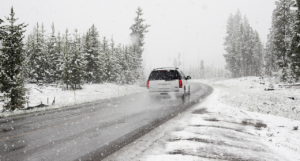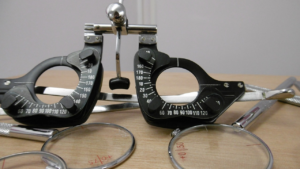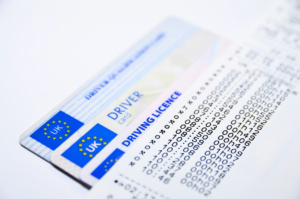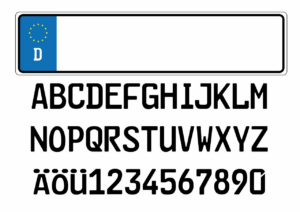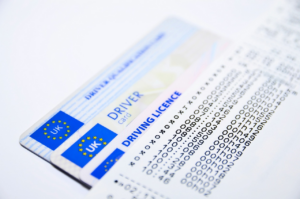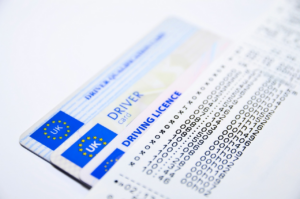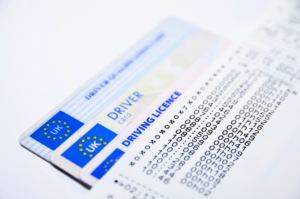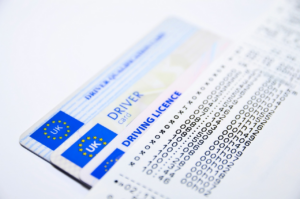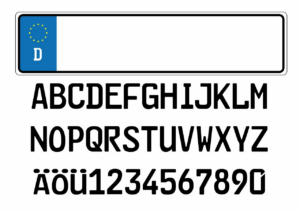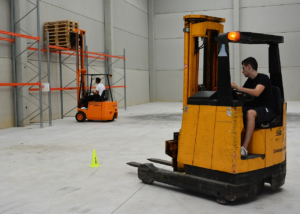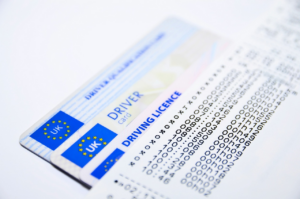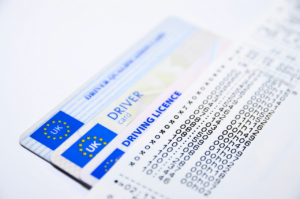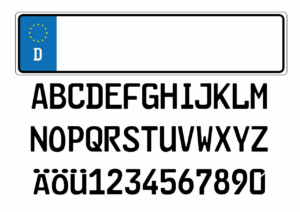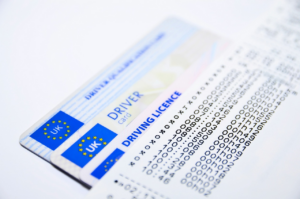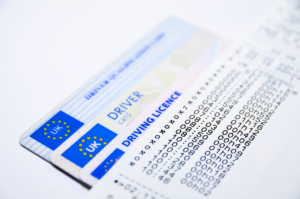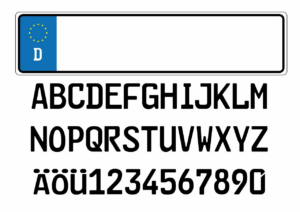Getting your Montana driver’s license can be a daunting task, but it doesn’t have to be. With the right knowledge and preparation, you can pass each stage of Montana’s Graduated Driver Licensing (GDL) program and obtain your full driver’s license.
This complete guide will walk you through the entire process, from obtaining your learner’s permit to renewing your driver’s license. First, you’ll need to understand the three stages of Montana’s GDL program: obtaining a learner’s permit, obtaining a probationary license, and obtaining a full driver’s license.
Each stage has specific requirements and restrictions, but with the right preparation, you can successfully progress through each stage and become a fully licensed driver. This guide will provide tips for passing the written test and driving test, as well as answering frequently asked questions about the Montana driver’s license process.
With this guide, you’ll feel confident and in control as you navigate the process of obtaining your Montana driver’s license.
Understanding Montana’s Graduated Driver Licensing (GDL) Program
You’re probably feeling overwhelmed and anxious about navigating Montana’s GDL program, but don’t worry, we’ve got you covered with all the information you need to succeed.
Montana’s GDL program is designed to help new drivers gain experience and develop safe driving habits before earning their full driver’s license. The program is divided into three stages: the learner’s permit, the intermediate license, and the full driver’s license.
The first stage is the learner’s permit, which is available to drivers who are at least 14 1/2 years old. To obtain a learner’s permit, you must pass a written test and a vision test. With a learner’s permit, you can only drive with a licensed driver who is at least 18 years old and has at least five years of driving experience.
During this stage, you must complete at least 50 hours of supervised driving, including 10 hours at night, before you can move on to the next stage of the GDL program. Remember, this is just the beginning of your journey to becoming a safe and responsible driver in Montana.
Stage 1: Obtaining a Learner’s Permit
To start your journey towards driving independence in Montana, the first step is obtaining a learner’s permit. This permit allows you to practice driving with a licensed driver in the passenger seat.
To obtain a learner’s permit, you must be at least 14 years old and pass a written exam on Montana’s traffic laws and safe driving practices. To prepare for the written exam, you can study the Montana Driver Manual, which is available online or in print at your local driver licensing station.
The manual covers a range of topics, including traffic signals, road signs, speed limits, and driving under the influence. Additionally, you can take practice tests on the Montana Motor Vehicle Division website to gauge your understanding of the material.
Once you pass the written exam and pay the required fee, you will receive your learner’s permit and can begin practicing driving with a licensed adult in the car. Remember to always follow the rules of the road and drive safely.
Stage 2: Obtaining a Probationary License
To obtain a Probationary License in Montana, you must meet certain eligibility requirements and provide required documents. You’ll also need to pass a driving test to demonstrate your ability to operate a vehicle safely.
Once you have a Probationary License, there will be certain restrictions you must follow before you can obtain a full driver’s license.
Eligibility Requirements
If you meet the necessary qualifications, getting your driver’s license in Montana can be a straightforward process.
First and foremost, you must be at least 16 years old to apply for a Montana driver’s license. Additionally, you must have completed a state-approved driver education program or have held a valid learner’s permit for at least six months before applying.
Moreover, you must also provide proof of identity, residency, and citizenship or lawful presence in the United States. This can be done by presenting a valid U.S. passport, birth certificate, Social Security card, and two forms of proof of Montana residency such as utility bills or bank statements.
Following these eligibility requirements, you can move on to the next stage of the process and obtain your probationary driver’s license.
Required Documents
The documents required for obtaining a driver’s license in the state of Montana are discussed in this section.
To begin with, you need to provide a primary document that proves your identity. This could be a birth certificate, a passport, or a permanent resident card.
Additionally, you need to submit a secondary document that shows your social security number. This could be your social security card, a W-2 form, or a pay stub that has your full social security number mentioned on it. Make sure that the documents you submit are original or certified copies, as photocopies are not accepted.
Apart from these two essential documents, you also need to provide proof of Montana residency. This could be in the form of a lease agreement, a utility bill, or a bank statement that has your name and address mentioned on it.
If you are under 18 years of age, you also need to submit a school enrollment form or a high school diploma.
Finally, you need to provide a completed driver’s license application form along with the required fee.
With all these documents in hand, you can visit your local MVD office and start the process of obtaining your Montana driving license.
Driving Test
It’s time to show off your driving skills and prove to yourself that you’ve got what it takes to hit the road with confidence. The driving test is the final step in obtaining your Montana driver’s license, and it’s important to approach it with the right mindset.
Here are some tips to help you prepare for the test:
-
Practice, practice, practice. The more time you spend behind the wheel, the more comfortable and confident you’ll feel on test day.
-
Know the rules of the road. Study the Montana Driver Manual and make sure you understand all traffic laws and regulations.
-
Stay calm and focused. Anxiety and nervousness can negatively impact your driving performance, so take deep breaths and stay focused on the road.
-
Listen to your examiner. Your examiner will give you instructions throughout the test, so make sure you listen carefully and follow their guidance.
Remember, the driving test is designed to ensure that you’re a safe and responsible driver. By taking the time to prepare and approach the test with a positive attitude, you’ll be well on your way to earning your Montana driver’s license.
Restrictions
Successfully navigating through the restrictions section of this guide will provide you with a comprehensive understanding of the various limitations that may apply to your driving privileges. These restrictions are put in place to ensure the safety of both the driver and those around them. It is important to be aware of these restrictions and to follow them accordingly, as violating them can result in fines, license suspension, or even legal consequences.
To help you better understand the restrictions that may apply to your driving privileges, we have provided a table below. This table outlines the different types of restrictions that may be placed on your license, what they mean, and what actions you can take to have them removed. By familiarizing yourself with this information, you can take control of your driving privileges and ensure that you are driving safely and within the confines of the law.
| Restriction | Meaning | Action Required to Remove |
|---|---|---|
| B | Corrective lenses | Pass a vision test while wearing corrective lenses |
| C | Mechanical Aid | Pass a driving test using a mechanical aid |
| D | Prosthetic Aid | Pass a driving test using a prosthetic aid |
| E | Automatic Transmission | Pass a driving test using an automatic transmission |
| F | Outside Mirror | Pass a driving test using an outside mirror |
| G | Daylight Only | No driving after sunset or before sunrise |
| H | Employment | Driving only for work purposes |
| I | Ignition Interlock | Install and maintain an ignition interlock device |
| J | Limited Distance | Driving only within a certain distance from your home |
| K | Bus Only | Driving only buses |
| L | Motorcycle Only | Driving only motorcycles |
| M | Medical Alert | Medical alert for a medical condition |
| N | No Highway Driving | No driving on highways |
| O | Oxygen | Medical alert for oxygen use |
| P | Passenger | No passengers allowed |
| Q | Other | Varies |
| Z | No Full Air Brake Equipped CMV | No driving of a commercial vehicle with full air brakes |
By understanding the different restrictions and taking the necessary actions to have them removed, you can ensure that you are driving safely and within the confines of the law. Remember, driving is a privilege, not a right, and it is important to follow these restrictions to ensure the safety of yourself and those around you.
Stage 3: Obtaining a Full Driver’s License
To obtain a full driver’s license in Montana, you must meet specific eligibility requirements, provide required documents, and pay the applicable fees.
To be eligible, you must have held a probationary license for at least six months, completed at least 50 hours of supervised driving (10 of which must be nighttime driving), and have no traffic convictions or violations during the probationary period.
Required documents include proof of identity, residency, and social security number.
The fees vary depending on age and whether or not you’ve completed an approved driver education course.
Eligibility Requirements
You must meet specific eligibility requirements to obtain your driver’s license in Montana.
First, you must be at least 16 years old to apply for a driver’s license. If you’re under 18, you must also have completed a state-approved driver education course.
Additionally, you must have held a learner’s permit for at least six months and have completed at least 50 hours of supervised driving, with 10 of those hours being at night.
Once you’ve met these requirements, you can schedule a driving test with the Montana Motor Vehicle Division (MVD). During the driving test, you’ll be evaluated on your ability to safely operate a vehicle and follow traffic laws.
If you pass the driving test, you’ll be issued a full driver’s license. Remember that driving is a privilege, not a right, and it’s important to always follow the rules of the road to maintain your driving privileges.
Required Documents
Now that you know if you meet the eligibility requirements to obtain a Montana driving license, the next step is to gather all the required documents.
In order to complete the application process, you’ll need to bring a variety of documents with you to the Montana DMV. First and foremost, you’ll need to provide proof of identity, such as a valid passport, birth certificate, or permanent resident card.
Additionally, you’ll need to bring proof of residency, which can include a lease agreement, utility bill, or bank statement. You’ll also need to provide your Social Security card or a document with your Social Security number on it.
Finally, you’ll need to pass a vision test and provide proof of insurance. By ensuring you have all the necessary documents, you can streamline the application process and get on the road faster.
Fees
Paying the necessary fees is an essential step towards obtaining your new driver’s permit, so make sure to have the correct amount ready when you head to the DMV.
The fees for a Montana driver’s license vary depending on the type of license you are applying for. For a standard Class D license, the fee is $40. However, if you are applying for a commercial driver’s license (CDL), the fees range from $50 to $200 depending on the type of CDL and endorsements you need.
It’s important to note that these fees are non-refundable, so make sure you have all the necessary documents and requirements before paying them. If you are under 21 years old, you will also need to pay an additional $5 for a graduated driver’s license.
Additionally, if you need to retake any of the exams or tests, you may need to pay additional fees. Make sure to check with the DMV beforehand to avoid any surprises.
Tips for Passing the Written Test
When preparing to take the written test for your Montana driver’s license, there are several key points to keep in mind.
First, it’s important to study the materials provided by the Department of Motor Vehicles carefully.
Secondly, familiarize yourself with the test format in order to feel confident and comfortable on test day.
Finally, be sure to avoid common mistakes that many test-takers make, such as rushing through questions or not reading them carefully enough.
By following these tips, you can increase your chances of passing the written test and obtaining your driver’s license.
Study Materials
You’ll want to make sure you’re fully prepared with all the necessary study materials for this section. The Montana driving license written test covers a wide range of topics, including road signs, traffic laws, and safe driving practices. To give yourself the best chance of passing, you’ll need to study extensively.
Thankfully, there are plenty of resources available to help you prepare. You can start by reviewing the Montana Driver Manual, which is available online or in print at any Montana DMV location.
Additionally, there are many online practice tests and study guides that you can use to reinforce your knowledge. By taking advantage of these resources, you can feel confident and prepared when it comes time to take the written test.
Test Format
Get ready to ace the test with this section’s breakdown of the exam format – it’ll leave you feeling confident and prepared!
The Montana driving license test consists of two parts: a written knowledge test and a road skills test.
The written knowledge test is comprised of 33 multiple choice questions, which are based on the Montana Driver’s Manual. You’ll have 30 minutes to complete the exam, and you must correctly answer at least 27 questions to pass. The questions cover topics such as traffic signs, signals, safe driving techniques, and Montana laws and regulations.
The road skills test is designed to evaluate your ability to safely operate a vehicle on the road. During this portion of the exam, you’ll be asked to perform various driving maneuvers, such as turning, backing up, and parking. You’ll also be graded on your ability to follow traffic signals and signs, as well as your general driving skills. The road skills test typically lasts around 20 minutes, and you must pass both the written knowledge test and the road skills test to obtain your Montana driver’s license.
By understanding the format of the test, you can focus your study efforts and maximize your chances of success.
Common Mistakes to Avoid
Don’t make common mistakes on the test by learning what to avoid in this section. Here are some common mistakes that you should avoid if you want to pass the Montana driving license test with flying colors:
-
Not studying enough: One of the most common mistakes that people make is not studying enough for the test. You should take the time to read the Montana Driver Manual, practice your skills, and take mock tests to prepare for the actual test. Don’t assume that you know everything just because you’ve been driving for a while.
-
Not following instructions: Another common mistake is not following the instructions given by the examiner. Make sure that you listen carefully to what the examiner is saying and follow their instructions. If you’re not sure about something, ask for clarification.
-
Failing to check mirrors and blind spots: Lastly, failing to check mirrors and blind spots is a common mistake that can cost you a passing score. During the test, make sure that you’re constantly checking your mirrors and blind spots. This isn’t only important for the test, but it’s also crucial for safe driving on the road.
Tips for Passing the Driving Test
To pass your Montana driving test, it’s crucial to keep calm and concentrate on practicing safe driving habits. Always use your turn signals when changing lanes or turning, and make sure to check your blind spots before making any moves. Your examiner will be observing your ability to handle the vehicle, your knowledge of traffic rules, and your awareness of your surroundings.
Additionally, make sure to follow all speed limits and traffic signs, and always look both ways at intersections. It’s also important to maintain a safe distance from other vehicles and to avoid distractions while driving.
By staying focused and confident, you can increase your chances of passing your Montana driving test on the first try and obtaining your driver’s license.
Renewing Your Montana Driver’s License
If you’re due for a license renewal, you’ll want to know the steps to take to keep your driving privileges intact and stay safe on the road. Here’s what you need to do:
-
Check the expiration date on your license: The Montana Department of Justice will send you a reminder notice about 60 days before your license expires. However, it’s your responsibility to keep track of the expiration date and plan ahead for renewal.
-
Schedule an appointment: You can renew your license up to six months before the expiration date. Schedule an appointment at your local driver license station or make one online through the Montana DMV website. Be sure to bring your current driver’s license, proof of identity, and payment for the renewal fee.
Renewing your Montana driver’s license is a straightforward process as long as you follow the necessary steps and requirements. By being proactive and planning ahead, you can ensure that your driving privileges remain intact and that you continue to be a safe and responsible driver on the road.
Frequently Asked Questions (FAQs)
You’ll love exploring these Frequently Asked Questions (FAQs) to get all the answers you need about renewing and updating your driver’s license. Whether you’re a new resident or a long-time Montana driver, it’s important to stay up-to-date with the latest laws and regulations. By familiarizing yourself with these FAQs, you can feel confident and in control when it comes to your driver’s license.
To make it even easier, we’ve compiled a table with some of the most common questions and answers about renewing your Montana driver’s license. From the required documents to the fees and timelines, this table provides a comprehensive overview of what you need to know. Take a look and find the information you need to stay on top of your driver’s license renewal and keep hitting the road with confidence.
| Question | Answer | Additional Information |
|---|---|---|
| What documents do I need to renew my Montana driver’s license? | You’ll need to bring your current license, proof of identity, and proof of Montana residency. | Acceptable forms of documentation are listed on the MVD website. |
| How much does it cost to renew my Montana driver’s license? | The fee for a standard renewal is $40. | Additional fees may apply for certain endorsements or advanced licenses. |
| How often do I need to renew my Montana driver’s license? | Your license expires every 8 years. | You will receive a renewal notice in the mail, but it’s important to stay on top of the expiration date. |
| Can I renew my Montana driver’s license online? | Yes, if you meet certain eligibility requirements. | Check the MVD website to see if you’re eligible for online renewal. |
| How long does it take to receive my new Montana driver’s license? | Typically 7-10 business days. | If you need your license sooner, you can pay an additional fee for expedited service. |
Frequently Asked Questions
Can I take the Montana driving test in a language other than English?
If you’re wondering whether you can take the Montana driving test in a language other than English, the answer is yes. Montana does allow for the test to be taken in other languages, as long as you provide your own translator.
However, it’s important to note that the translator must be approved by the Montana Department of Justice. It’s also worth noting that the Montana Driver Manual is only available in English, so you’ll need to have a good understanding of the language in order to fully prepare for the test.
Overall, while it’s possible to take the Montana driving test in another language, it’s important to be well-prepared and have a qualified translator on hand to ensure the best chance of success.
Can I use my out-of-state learner’s permit to drive in Montana?
Yes, you can use your out-of-state learner’s permit to drive in Montana. However, it’s important to note that the rules and regulations for driving with a learner’s permit vary from state to state.
In Montana, you must be accompanied by a licensed driver who is at least 18 years old and has had at least two years of driving experience. Additionally, you must adhere to the restrictions listed on your permit, such as driving only during certain hours or avoiding certain roads.
It’s always a good idea to familiarize yourself with Montana’s specific laws and regulations before hitting the road.
Can I apply for a Montana driver’s license if I am not a US citizen?
As a non-US citizen, you can still apply for a Montana driver’s license if you meet certain requirements. You must provide documentation proving your identity, legal presence in the United States, and Montana residency.
Acceptable forms of identification include a passport, visa, and I-94 form. You’ll also need to pass a vision test, written test, and driving test. If you have a valid driver’s license from another country, you may be exempt from taking the driving test.
Once you’ve met all the requirements, you’ll receive your Montana driver’s license and be able to legally operate a vehicle in the state.
What happens if I fail the driving test in Montana?
Failing the driving test in Montana can be disappointing, but it’s not the end of the world. You’ll be given a score sheet that outlines the areas where you need to improve.
You can take the test again after waiting for a certain period of time. It’s important to practice and study the Montana Driver Manual to ensure that you’re prepared for the test.
You can also consider taking driver education classes or hiring a driving coach to help you improve your skills. Remember, the goal of the driving test is to ensure that you’re a safe and responsible driver, so take the feedback you receive seriously and use it to improve your driving skills.
Is there a grace period for renewing my Montana driver’s license after it has expired?
If your Montana driver’s license has expired, there’s a grace period of six months to renew it. During this time, you can still legally drive as long as you have a valid license from another state or country.
However, if you wait longer than six months to renew your license, you’ll have to start the process over as if you’re getting a new license. This means retaking the written and driving tests and paying the associated fees.
It’s important to renew your license before it expires to avoid having to go through this process again. Take control of your driving situation by staying on top of your license renewal dates.
Conclusion
Congratulations on making it to the end of this guide to obtaining your Montana driver’s license! By understanding and following the state’s Graduated Driver Licensing (GDL) program, you can safely and confidently drive on Montana’s roads.
Remember that the GDL program has three stages: obtaining a learner’s permit, obtaining a probationary license, and obtaining a full driver’s license. It’s important to follow the requirements for each stage, including completing driver education courses, practicing driving with a licensed adult, and passing both the written and driving tests.
To increase your chances of success, be sure to study for both tests, practice driving as much as possible, and stay up-to-date on Montana’s driving laws and regulations. And don’t forget to renew your driver’s license before it expires to avoid any fines or penalties.
Overall, obtaining a Montana driver’s license is a process that requires dedication and responsibility. By following the guidelines outlined in this guide, you’ll be on your way to becoming a safe and responsible driver in the beautiful state of Montana.





